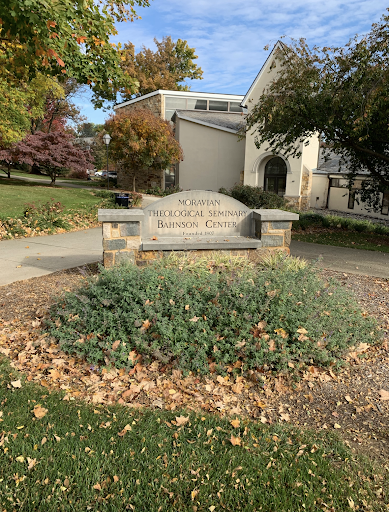
The Moravian Theological Seminary scholar-in-residence, Dr. Christina Patterson, delivered a presentation at the Moravian Archives on Oct. 17 titled “Moravians in Greenland: Where Did They Go?” Patterson is an independent scholar and has conducted research in multiple countries.
The Moravian mission to Greenland began on Jan. 19, 1733, when three Moravians departed from Herrnhut, Germany, to Copenhagen, Denmark, with the goal of teaching and converting native Greenland Inuit to their religion and way of life.
Three months later they boarded a ship to Greenland, carrying with them extra clothing and money but little guidance on how to form and lead a congregation. Because of heavy storms, they didn’t arrive in Greenland until May 20.
The first few years were a struggle, as the Moravians acclimated to life on barren lands. They had to find food, study Greenland’s native language, Kalaallisut, and construct housing for the additional missionaries who arrived in 1736, three of whom were women.
The first mission station was named New Herrnhut. Later stations were named Lichtenfels, built in 1758, and Lichtenau, built in 1774.
The single missionary sisters lived in a “choir house” from 1779 to 1783. A choir was a group in the Moravian society that was segregated by age, gender, or marital status. The choir houses are the homes that each choir lived in.
From 1772 onward, houses were built for widows, and from 1753 onward houses for single brothers were built. These buildings were used to house the growing membership, including both Moravians and converted Inuits.
The Moravian tradition of living communally overlapped with some traditional Inuit ways. Inuit families lived together to share resources. These families also hunted together and shared game. Moravian choir houses served a similar purpose, as members of each house worked together and shared in these Moravian communities. This structure and function of choir houses allowed most Moravian communities to thrive.
By 1782, there were 1,222 members, which included Moravians from Germany as well as converted Inuit.
Debates began in 1781 about whether the choir houses should be maintained or destroyed in Greenland. The Moravians recognized that the purpose of the choir houses had not been reached. They argued that it would be more beneficial for single brothers and sisters to live in the family houses.
Because unmarried men relied on the help of women in their daily work, they needed to communicate with the unmarried sisters or widows. Moravians looked askance at the arrangement because they believed it hindered the men’s self-reliance and thus trained them to become poor providers.
“So here, we see the problem with gender segregation, in that it interferes with the Inuit way of life and division of labor,” Patterson said.
In 1784, the winter settlements were built for the first time without choir houses, but the communal spirit prevailed. This spirit was fostered through daily and weekly events. There were biweekly morning assemblies and a general midweek assembly led by one of the missionaries. Sunday service also occurred weekly.
The Moravians maintained extensive communication and records of their lives, Patterson said. This information was recorded through diaries, letters, reports, instruction, and visitation, among others. These forms of communication were used from the beginning, even before the Moravians had a formal organization.
These letters and other forms of communication posed questions about ordinary, daily activities as well as larger-scale activities of the Moravians in Greenland as a whole. They posed questions such as if chickens should be purchased.
Patterson also showed an example letter of Moravians in Germany agreeing that the purchase of sheep would be beneficial but criticizing the Moravians in Greenland for writing about this issue in their diary rather than a letter.
During their time in Greenland, the Moravians baptized nearly 10,000 Inuit which was part of their goal as they brought their religious beliefs to Greenland.
In 1782, the Moravians had three mission stations with 1,222 members. At the end of the 19th century, they had six main stations, with nine schools and 28 outstations with 24 schools.
By this time, the Moravians were struggling financially. Because of this, the General Synod of the Moravian Church met in 1899 and decided to reduce missionary activity. They allowed the Danish Lutheran Church to take over the Moravian activity in Greenland.
The last Moravian missionaries left the country on Sept. 11, 1900, after 167 years in Greenland,
“So even though there is no Moravian congregation in Greenland, the Moravians are there; initially as mere traces of 168 years of hard work,” Patterson said. “But once you know where to look, their presence is still a very living one.”







